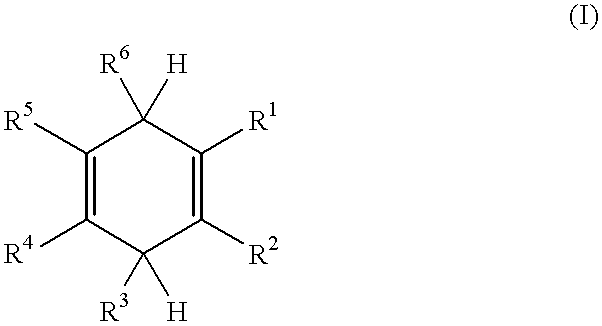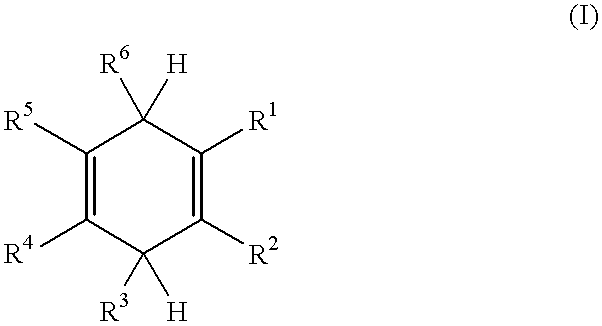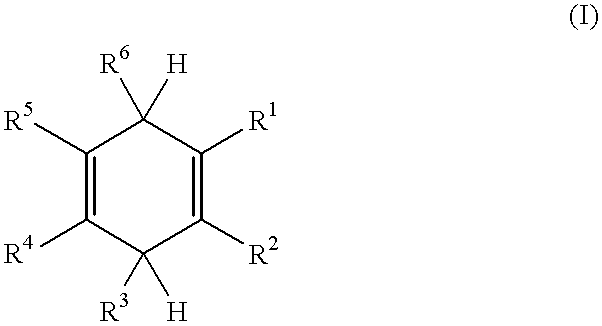Chain transfer agents for olefin polymerization
a technology of olefin and chain transfer agent, which is applied in the field of chain transfer agent for olefin polymerization, can solve the problems of reducing the productivity of the polymerization catalys
- Summary
- Abstract
- Description
- Claims
- Application Information
AI Technical Summary
Problems solved by technology
Method used
Image
Examples
example 1
This example demonstrates the activation of the catalyst in solution prior to charging to the polymerization reactor.
MMAO-7 (0.6 mL, 2.3 mmol Al) and 1,4-cyclohexadiene (1.0 mL, 10.6 mmol, 4400 equivalents per Ni) were dissolved in heptane (300 mL), and charged to the reactor. The reactor was equilibrated to 50.degree. C. and 1.24 MPa ethylene. (XII) (1.6 mg, 2.4 .mu.mol) was dissolved in dichloromethane (10 mL) and activated by addition of MMAO-7 (0.1 mL, 0.4 mmol Al, 1100 total equivalents Al per Ni), then charged to the addition cylinder using nitrogen. The polymerization was initiated by injecting the catalyst solution using nitrogen to bring the final reactor pressure to 1.38 MPa. The temperature rose to an average of 56.degree. C., which was maintained for about 48 min. After quenching with methanol, the PE was isolated to give 12.63 g (90 kg PE / g Ni). The melt index (190.degree. C., 2160 g) was 0.11 dg / min. The branch content was 38.1 CH.sub.3 / 1000 CH.sub.2 by .sup.1 H NMR (...
PUM
| Property | Measurement | Unit |
|---|---|---|
| temperature | aaaaa | aaaaa |
| temperature | aaaaa | aaaaa |
| weight | aaaaa | aaaaa |
Abstract
Description
Claims
Application Information
 Login to View More
Login to View More - R&D
- Intellectual Property
- Life Sciences
- Materials
- Tech Scout
- Unparalleled Data Quality
- Higher Quality Content
- 60% Fewer Hallucinations
Browse by: Latest US Patents, China's latest patents, Technical Efficacy Thesaurus, Application Domain, Technology Topic, Popular Technical Reports.
© 2025 PatSnap. All rights reserved.Legal|Privacy policy|Modern Slavery Act Transparency Statement|Sitemap|About US| Contact US: help@patsnap.com



